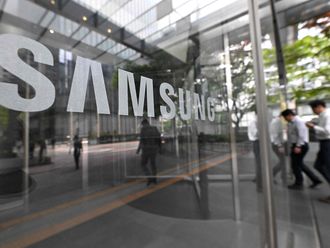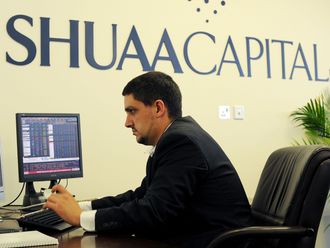Shanghai is set to get a whiff of the desert air — in all its high-tech glory. The Shanghai World Expo, hailed as the most extravagant shows of recent times, will have Saudi Arabia and the UAE laying out the green carpet at two of the biggest and most innovative of pavilions.
The World Expo is a 1,200-acre platter of cutting edge architectural and engineering concepts from 190 countries, a sort of design board for future mega cities and an opportunity for stock investors. At least 70 million visitors are expected to arrive in Shanghai from May to October and the Gulf countries have poured in the largest human and financial resources ever for any expo activity.
So gigantic is the show that it has sent small ripples down the stock market.
Stock market ripples
According to some estimates, the Expo will generate between 60 billion yuan (Dh32 billion) and 100 billion yuan in direct consumption, with hotel, aviation, retail, catering and transportation industries set to gain the most.
Expo-related concept stocks are no doubt the season's special and investors say these are bound to have a good run for at least eight more months.
China Eastern Airlines, the nation's second-largest carrier, expects passenger numbers to rise more than 20 per cent this year. The Expo is expected to attract 11 million to 16 million air passengers, of which 3.5 million to 4 million will be from overseas. The airline posted an annual profit in 2009 after the losses suffered in 2008.
The hotel industry is preening at the prospect of heavy footfalls. Home Inns and Hotels Management, China's second-biggest budget hotel operator, expects full occupancy at its 61 hotels during the Expo. The company, listed in Nasdaq, gained 1.6 per cent in the USX China Index and will hike room rates by as much as 20 per cent.
Infrastructure overhaul
Its bigger rival Shanghai Jinjiang International Hotels Development, which manages 900 rooms in an apartment hotel in the Expo Village, saw its stocks gain more than 45 per cent over the last three months.
The Shanghai Expo has also generated an infrastructure overhaul, a small cog in the plot to make the city an international financial hub by 2020.
A lynchpin of this plan is a sophisticated transport system with an extensive metro. The city has added 400 kilometres within the Expo deadline and Shentong Metro, which operates Shanghai's main subway line, has been surging on anticipation of the millions of Expo commuters using its services. Shentong Metro's shares jumped more than 60 per cent in recent months.
The Expo will also serve as a catalyst for alternative energy stocks. The pavilions are a veritable showcase of financially viable new-age green technology, be it solar panels or bio-degradable soyabean roofs generating electricity. This, combined with the National People's Congress decision to turn China into a green economy, is doing wonders for low-carbon equities.
Renewable energy
Renewable energy related industries such as wind power and lithium-ion batteries are the biggest beneficiaries for now. Shenzhen Desay Battery Technology, a medium-sized primary lithium battery maker listed in Shenzhen, has gone north in the past weeks. Jiangsu Sunshine Co, a manufacturer of polysilicon used in solar-power panels listed in Shanghai, has also edged up.
However, analysts are not ready to party just yet. Concept-related stocks, especially the small caps with high debt ratios, usually see corrections in the long run. In a country like China, where industry ‘good news' is fairly routine, the young stock market reacts with equal doses of fervour and nervousness. Investors here are quick to jump on to flashy bandwagons and Expo stocks run a risk.
The good news, however, is that 2009 has been a bumper year for China's listed companies with 70 percent announcing staggering profits in their annual reports. It was the brick and mortar real estate companies, machine manufacturers, transport equipment firms, communication facilities and construction and building material dealers who ruled the indexes.
The columnist is a writer based in China.











